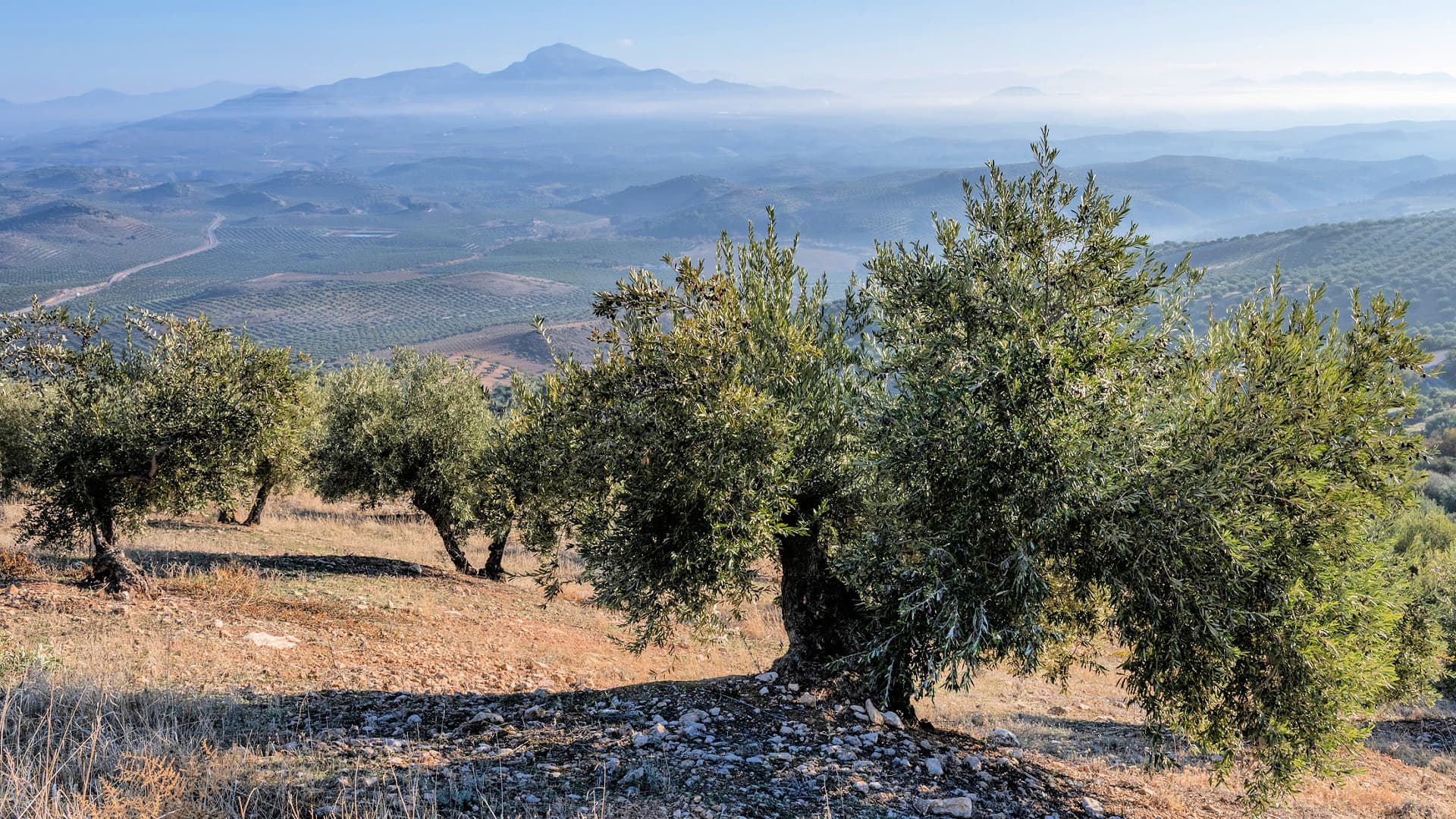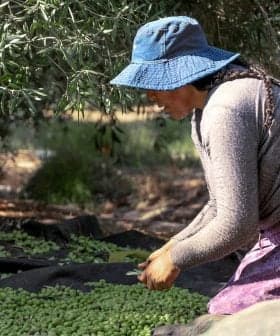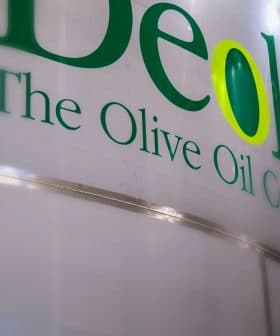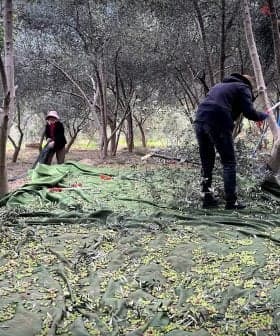Officials in Spain Optimistic Ahead of Harvest as Prices Remain Elevated
Spain is expected to produce between 1.4 and 1.5 million tons of olive oil in the 2024/25 crop year after a wet winter and mild spring favored a bumper crop.
 Spain is expecting an average harvest for this first time since the 2021/22 crop year. (Photo: Sucersores de Hermanos López)
Spain is expecting an average harvest for this first time since the 2021/22 crop year. (Photo: Sucersores de Hermanos López) Spain is expected to have a significant rebound in olive oil production after two poor harvests, with an estimated 1.4 – 1.45 million tons in the upcoming crop year. Despite some weather challenges, the improved production is anticipated to bring relief across the supply chain, with prices at origin expected to return to more normal levels.
Olive oil production in Spain is expected to rebound significantly after two consecutive historically poor harvests, bringing relief across the supply chain.
According to Juan Vilar, the chief executive of Vilcon, a consultancy, Spain is anticipated to produce between 1.4 and 1.45 million tons in the 2024/25 crop year, a downward revision from his previous estimate of 1.65 million.
Dusan Kaljevic, the chief executive of Filippo Berio North America, estimated that Spain would produce about 1.5 million tons.
This year’s harvest will undoubtedly be much higher than last year’s, but it is still too early to (tell how much better). There are still many months left until the end of the campaign.
“Winter was the ideal one,” he said. “It was not too cold or hot, which is best for the olive oil incubation. We had a lot of little fruits flowering on the trees. Most importantly, we had a perfect level of rainfall in January and February.”
As a result, water reserves rebounded significantly in Spain, which has helped especially the country’s many non-irrigated groves.
After producing an average of 1.41 million tons per annum in the five harvests leading up to 2021/22, consecutive years of drought and high spring temperatures led to massive fruit loss in Andalusia and the resulting collapse in Spanish production to 665,800 tons in 2022/23 and 852,600 tons the year after.
See Also:2024 Harvest UpdatesAndalusia is expected to produce about 1.1 million tons of olive oil this year, with significant rebounds in Jaén and Córdoba, the autonomous community’s two largest olive oil-producing provinces.
Production in Jaén is expected to reach 445,000 tons, a 116 percent increase compared to last year. Córdoba is also anticipating a harvest of 271,000 tons, a 79 percent increase compared to 203/24.
Seville and Granada also saw significant production increases, yielding 125,000 and 103,300 tons respectively. The other four provinces in the autonomous community will account for 76,700 tons.
However, Vilar said a lack of rain at the end of summer and beginning of autumn, paired with some extreme weather events, had reduced the previously even more optimistic production outlook.
“There was a problem with bad hail,” he said. “Then, there was also a problem with a series of heat waves during the previous months. The weather in Spain has been negative for the evolution of the harvest trend.”
Despite the significant winter and spring rains, Vilar noted autumn in Andalusia has been drier and hotter than usual. “This will create conditions that are not the most suitable for a good campaign,” he said.
Still, Juan Jimenez, the chief executive of Jaén-based Green Gold Olive Oil Company, said the spring and winter rain made all the difference.
His company started harvesting at the beginning of the month for an early harvest brand and will finish the harvest after the rest of the olives reach veraison later in the year.
“The harvest is noticeably better for different reasons,” Jimenez said. “The olive grove has been very rested after two years without, or with little fruit; there has been better rainfall, less extreme weather and at the key moments for the olive grove (flowering, fruit set and stone-setting), the weather has behaved as usual.”
Andrea López Vericat, the chief executive of Sucersores de Hermanos López in the neighboring province of Córdoba, said she expects an “average harvest” this year after the family company experienced its “worst harvest in the last 20 years” last year.
“This year’s harvest will undoubtedly be much higher than last year’s, but it is still too early to [tell how much better],” she said. “There are still many months left until the end of the campaign, and there are always variables that can modify oil production: weather, pests, and industrial performance.”
Depending on the weather, Sucersores de Hermanos López expects to begin harvesting at the end of the month.
While the harvest will remain below the historic highs at the end of the last decade, Vilar said it will bring significant relief across the supply chain.
“The upcoming campaign will be very good for all operators in the supply chain,” he said. “Farmers are relatively happy. Oil mills are also relatively happy. Bottlers will have greater availability. Consumers will have better prices, and large retailers will make money because more oil is available.”
According to Spain’s Ministry of Agriculture, Fisheries and Food, Spain finished the 2023/24 crop year on September 30th with 186,303 tons of olive oil stocks.
Asaja Jaén, a farmers’ union, said this amount would meet demand until the first olive oil from the current harvest flows into storage tanks at the end of November and December.
For his part, Vilar said he expects price at origin fluctuations to mirror the weather. Since reaching record-high levels in January, extra virgin, virgin and lampante olive oil prices have fallen significantly.
The sharpest decline came during March after sustained rain and seasonable temperatures resulted in excellent flowering and fruit set conditions. Prices steadily climbed over the spring as olive oil sales remained high and stocks declined.

Jaén is expected to reach 445,000 tons, a 116 percent increase compared to the 2023/24 crop year. (Photo: Sucersores de Hermanos López)
The first estimates of potentially 1.65 million tons in mid-June resulted in prices falling to their lowest levels since July 2023.
Indeed, drier weather and news of extreme events in Jaén and Catalonia saw prices rise again before falling at the beginning of October as early harvests began in Spain and Portugal.
“The harvest does not begin in Portugal until mid-October, where production is expected to be 180,100 tons,” he said. “Spain’s harvest will not start until November 15th, so throughout October, we will have to use the olive oil stock in Spain until November. Depending on the climate, prices could rise slightly before the harvest begins.”
According to InfaOliva, extra virgin olive oil prices are currently €6.733 per kilogram, 25 percent below the January high. Virgin and lampante olive oil prices have fallen similarly.
López and Jimenez are looking forward to prices at origin returning to more normal levels. Both producers said they noticed some customers stopped purchasing extra virgin olive oil as prices soared to historic highs.
“We should be able to take advantage of this moment to develop these new projects and expand our markets and customer penetration,” Jimenez said.
“If prices moderate, it will be important for people who have stopped buying extra virgin olive oil to start consuming it again, and in general, it will be a product that is not missing from the shopping basket,” López concluded.
Share this article









